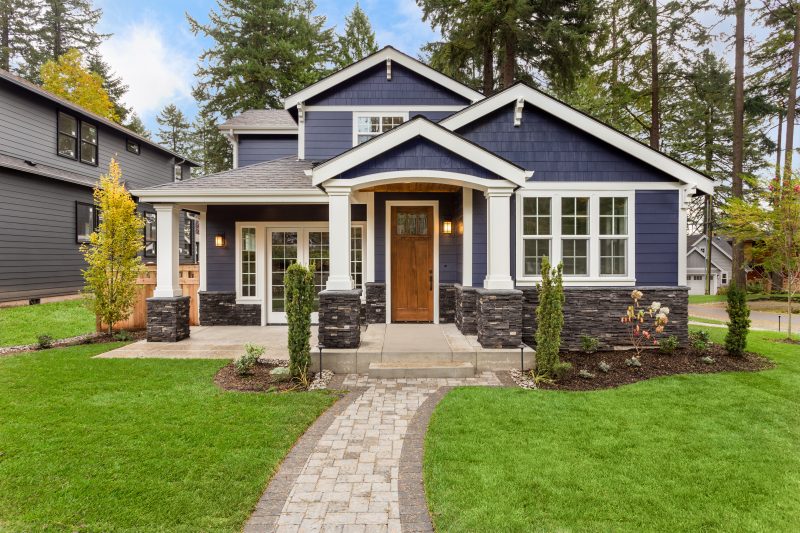
The “Goldilocks” house – not too big and not too small. Just the right size with all the right spaces.
Finding a home with the right spaces and functionality requires more than just surfing online and visiting homes that pop up in your search results. Invest the time up front to plan and consider your needs carefully. You will likely reap big quality of life rewards and reduced costs of living by finding a home that fits you perfectly.
Buy a home that is too big and you may needlessly be spending time and money maintaining spaces that rarely get used. Buy a house that is missing important functional spaces or doesn’t account for your changing family needs and you may quickly be disappointed.
Consider these tips when making choices about the spaces and functionality you desire in your next house. Get it right and avoid unnecessary stress and friction in your life while saving money too!
Plan for the functional spaces you need
Your home needs the functional spaces to fit your family’s lifestyle and should inspire you to use them. Make a list of what you like to do and how much time you spend doing these things. Clarify your list through lots of discussion with your family and your agent.
What home activities rejuvenate you – cooking, gardening, crafts, music? Unless you set up the spaces for these activities, chances are they won’t happen. So think through what the functional needs are for space, lighting, noise management, heating/cooling. Work with your agent to be sure these spaces are available.
Don’t assume your partner is on board with your in-ground swimming pool plan or rathskeller basement brewpub. A great agent with help you clarify and refine your list through dialogue. Additionally, they can help you see through the hype of staged rooms or dreary paint to better understand the fundamentals of each home.
List spaces that you loved from a childhood home
This is a great exercise. Chances are good you will be drawn to a home that has similar spaces and square footage to the one you grew up in. While selecting a home is about the mortgage payment, commute and neighborhood, it is also about a feeling. Try to distill out what rooms and home features have allowed you to be calm, happy, efficient or productive in previous homes.
Consider new construction
If new construction is available in your selected area, explore it carefully. Larger builders such as Pulte, Toll Brothers and Allen Edwin Homes do their own market research to design floor plans that work well for today’s buyers to add function and value. In addition to updated floor plans, new construction offers higher efficiency, deep daylight basements that finish into excellent living space. 9 ft ceilings are standard in many new homes. They feel more open and bring in a lot of extra light. While new construction will most likely be more expensive, you will find that increased efficiency and reduced maintenance expenses may offset the difference.
Consult with a qualified interior designer
Adding an interior designer to your team can help you define your space needs, develop plans for furniture layout and equipment. Once you have purchased a home, employ a designer to define circulation patterns, develop plans for furniture layout and select colors and finishes that reflect your style. A consultation with a good designer is a worthwhile investment and is often overlooked.
Bigger is not always better
A well-designed home does not have to be big, just big enough. Don’t assume more square footage equals more functionality. All the space and functional area you need can be found in a much smaller footprint than you imagined. Here are some reasons why smaller might be better.
- Less space to heat and cool will lower your utility bills
- Less space to fill with furniture allows you to buy fewer, higher quality pieces
- Less home to repair will lower household expenses
- Less home equals less mortgage. Pay off your mortgage quicker, save the interest for travel, kids, education, retirement or special purchases
- Consume less and lower your carbon footprint
- Less home to take care of will give you more free time for hobbies and fun. Take the time you would have spent working to pay for the house and time spent maintaining it and reinvest it on the fun things in your life
Consider light and materials
Consider orientation to the sun, number and placement of windows, materials used, ceiling height, location of the room in the house. All these things make a difference in the way a room feels and ultimately the joy you experience.
Communicate your vision
Tell your story! How does this home express your style and make you feel like your best life can unfold here? Are you able to tell a story about how the home you are selecting is going to come together into the best possible package? How does it fit your needs 5 or 10 years into the future? Most people don’t take the time to think a few months ahead, let alone try to visualize their life in 10 years. Putting your vision of yours and your family’s best life into words increases clarity; go one step further – put it in writing and share it with your partner or decision makers. Don’t compromise on your vision!
Work with an experienced, qualified agent
Find an experienced real estate agent that understands the tradeoffs in buying a home. They can guide you through the self-discovery process and work with you to systematically find and purchase a home that is the very best fit for you. The team at Piper Partners would love to learn more about what you’re looking for and how we can help! Please contact us if we can be of any assistance!










